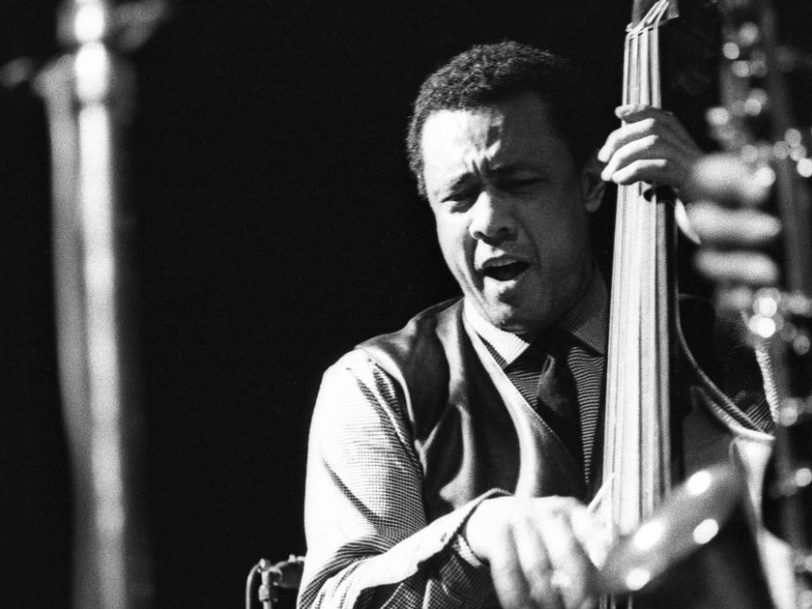When Charles Mingus returned to Atlantic Records in the 70s, the trailblazing jazz bassist and composer recorded a final run of albums in a burst of creativity that kept pace with his output at any other time in his career. Featuring new compositions, soundtrack work and revisits of classic earlier pieces, Charles Mingus’ seven 70s Atlantic Records studio albums – from 1974’s Mingus Moves to the posthumously released Something Like A Bird – reveal that the bandleader, who died before the decade came to a close, was still at the peak of his artistic powers. Collected together in the 8LP/7CD box set Changes: The Complete 1970s Atlantic Studio Recordings, these records chronicle the final chapter of Mingus’ musical journey. Helping you navigate your way through this cornucopia of late-period releases, here is a complete guide to Charles Mingus’ 70s Atlantic Records studio albums.
Listen to ‘Changes: The Complete 1970s Atlantic Studio Recordings’ here.
The backstory: One of jazz’s most significant composers
In early 1973, even the normally loquacious Charles Mingus was left speechless when his then record company, Columbia Records, fired him. Though the notoriously combative bassist/composer was renowned for his fiery temper, he wasn’t dismissed because of anything he had done, but because the label was having a purge of its major jazz acts. Columbia’s then boss, Clive Davis, viewed fusion as the new big thing in jazz and consequently sought to trim down his label’s roster by terminating the contracts of musicians who weren’t committed to electric jazz-rock. Besides Mingus, casualties included free-jazz maven Ornette Coleman and the pianists Bill Evans and Keith Jarrett, who were all shown the door.
But Mingus, then a veteran of 50, wasn’t without a record deal for long; his position alongside the great Duke Ellington and Thelonious Monk as one of the best jazz musicians in history saw to that. In April, he rejoined Atlantic Records, the label that he had first made his name with during a fertile spell in the late 50s and early 60s, when he released the classic albums Pithecanthropus Erectus and The Clown, which helped establish him as a major force in modern jazz.
Having already recorded some of the best Atlantic Records jazz albums, the bassist ensured that his second spell at the storied New York City label was no less productive than his first. Between 1973 and 1978, Mingus recorded seven studio albums, as well as a collaboration with the trailblazing Canadian singer-songwriter Joni Mitchell, for the posthumously released album Mingus). Sadly, on 5 January 1979, at the age of 56, Mingus succumbed to motor neurone disease, an incurable condition which he had been diagnosed with two years earlier.
The albums
‘Mingus Moves’ (1974)
On the Mingus Moves album, Charles Mingus’ first session for Atlantic in a dozen years, the bandleader led a quintet of mostly newcomers: flautist/tenor saxophonist George Adams, pianist Don Pullen and trumpeter Ronald Hampton. Significantly, Mingus also brought back a crucial former sidekick, drummer Dannie Richmond, whose familiarity with the bassist’s working methods helped bring cohesion to a session that featured only three new Mingus compositions among its seven tracks. Of these, Canon is the album’s standout track: a slow, melancholy, musical round defined by interwoven melodic phrases repeated by different instruments.
More upbeat are two hard-swinging numbers, Opus 4 and the edgier, more avant-garde-style Opus 3, the latter echoing Mingus’ classic Pithecanthropus Erectus title track. The democratic nature of Mingus’ band is reflected in the fact that members of his quintet wrote two cuts: the Pullen-penned Newcomer, written to celebrate the birth of the pianist’s daughter, and Flowers For A Lady, a Latin-infused piece by Adams. Singers Honi Gordon and Doug Hammond added a vocal dimension to the album by combining their talents on the track Moves.
Must hear: Canon




